The Alhambra is a must-see attraction when you visit Granada, but do you know what to see there? It’s a huge complex, and it’s easy to get overwhelmed by the masses of people, the history, and its layout. No need to worry, we’ve got you covered! Here are the top things to see at the Alhambra written by a historian.
Pro Tip: Planning what to do on your trip to Granada? Bookmark this post in your browser so you can easily find it when you’re in the city. Check out our Granada guide for more planning resources, our top Alhambra tours for a memorable trip, and how to visit the Alhambra.
Things You Shouldn’t Miss at the Alhambra
There’s architectural perfection in so many areas of the Alhambra. Perhaps that’s why it’s such an important site to see in Granada, Spain—aside from its ancient history. Ultimately, it’s a medieval fortress and palace and has been a UNESCO site since 1984. It is best known for the Nasrid dynasty buildings of the 13th and 14th centuries.
Before we dive in, here are a few things to know about the Alhambra. The monument itself is called Alhambra and Generalife. The name “Alhambra” means red fortress or castle because of the red earthy building materials that characterize it. It’s not one big palace but a complex of buildings, palaces, and gardens that don’t all date from the same period and didn’t serve the same purpose.
Visiting the Alhambra can be overwhelming without someone to help. It’s best to spend a few hours here to take it all in, and you’ll be better prepared after reading this article. To help you, here’s a list of the things you have to see at the Alhambra.
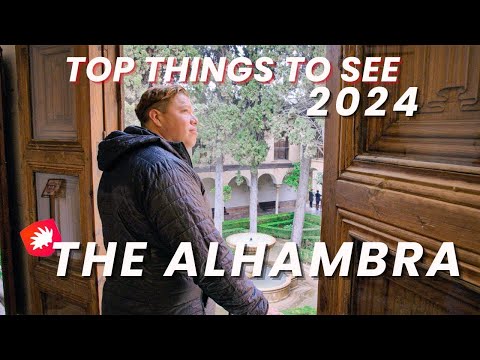
Watch this video on YouTube
Not ready to book a tour? Check out our guide to Granada.
11. Take In the Views from the Terrace
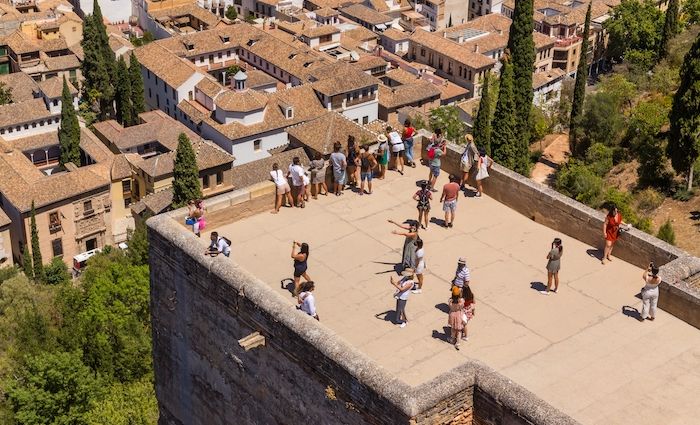

Breathtaking Views | Panoramic Photo | Granada
There are several viewpoints in the Alhambra complex where you can admire the Alhambra, Granada, and the surrounding areas. I would recommend going to the highest point in the Alcazaba named la Torre del Homenaje.
You’ll get a birds-eye view of the Alhambra complex and its beautiful surroundings. It would be like being transported back in time as a guard doing his security rounds of the fortress during the Middle Ages.
10. The Gardens
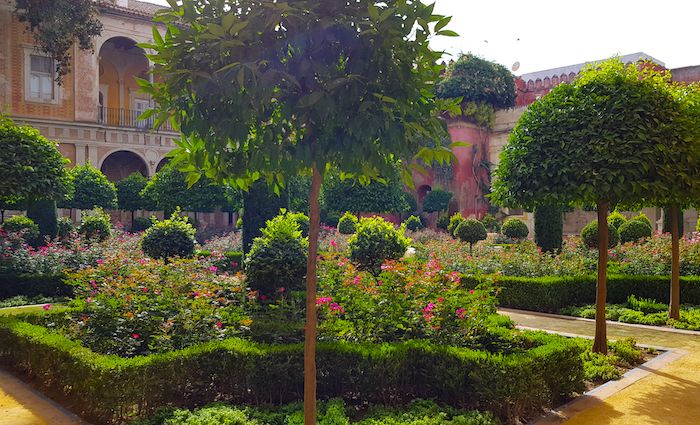

Intersectional Spaces | Natural Beauty | Acequia Court
It might surprise you to know just how many gardens and green spaces you’ll find throughout the Alhambra. In the Muslim world, gardens were (and still are) of great importance because they offered the opportunity to recreate paradise on Earth. In this hot climate, they were sure to be an escape.
According to Fairchild Ruggles, Islamic gardens are spaces where nature, design, history, and spirituality intersect. But they also fulfill the practical purpose of providing respite from the heat. It’s definitely worth taking a moment to stop and appreciate these spaces for their beauty and the shade they offer.
9. Alhambra Museum
Nasrid Art | Jarrón de las Gacelas | Palace Charles V
Here, you can find some of the best examples of Nasrid art which dates back to the 13th through 15th centuries! The museum is in the same building as the Charles V Palace, where you’ll see the round courtyard with pillars like in the image below.
The art in the museum here comes from archaeological excavations in the Alhambra complex or the restoration work in the palaces. It’s the best way to truly get to know what life was like here centuries ago.
It also exhibits pieces that help you place Nasrid art in the wider Muslim world and show the evolution of art through history. Don’t miss Jarrón de las Gacelas (the Vase with Gazelles) in the 5th room, which is one of my favorites.
8. Palace of Charles V
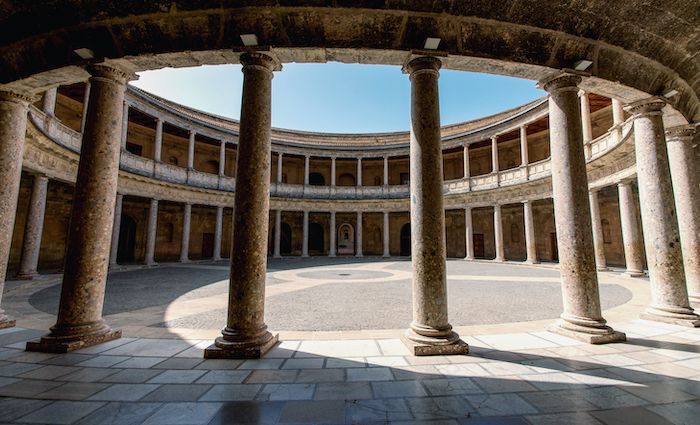

Casa Real | Moriscos Rebellion | Unfinished
According to Cabanelas Rodriguez, we have Catholic kings to thank for the Alhambra’s survival. Usually, most Muslim royal palaces were destroyed or repurposed during the Reconquista (reconquest). However, the Alhambra was declared a Casa Real (royal accommodation), so it survived the destruction.
Of all the Christian kings who could have lived here, Charles V seems to have been the only one who sincerely intended to do so. It’s probably why the palace was named for him after construction started in 1533.
The palace, however, was never finished, and Charles and his court never properly moved into the premises. When the Moriscos rebelled in Andalucia during his reign, the project was halted as it would have sent the wrong message to the population. The Muslim past of Spain was no longer a priority for Spanish politics.
7. El Partal
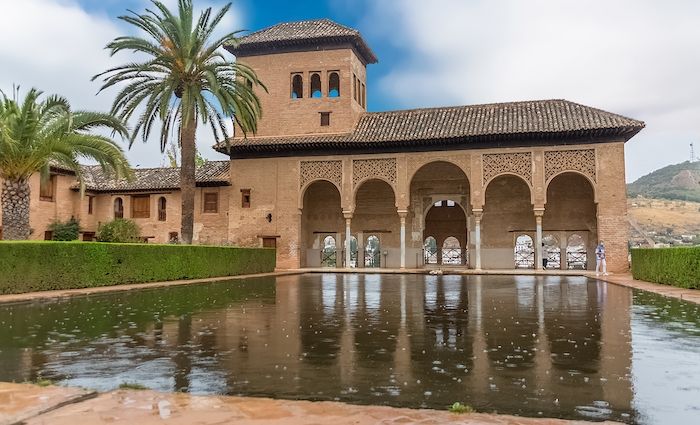

Reconstructed | Palace Remains | Photo Spot
This is one of the parts of the Alhambra that has been most heavily reconstructed, according to historian Vilchez. Yet it only has one of its four sides left, which often leads people to mistake it for a garden pavilion. In fact, according to historian Zaki, it would have been more like a townhouse.
The gardens around it are mostly from the 20th-century transformation of the Alhambra. It’s a great spot to take a picture with a beautiful balance between architecture and nature. Definitely don’t skip this serene little spot at the Alhambra.
Not ready to book a tour? Check out our Granada Guide for more resources.
6. Unique Inscriptions
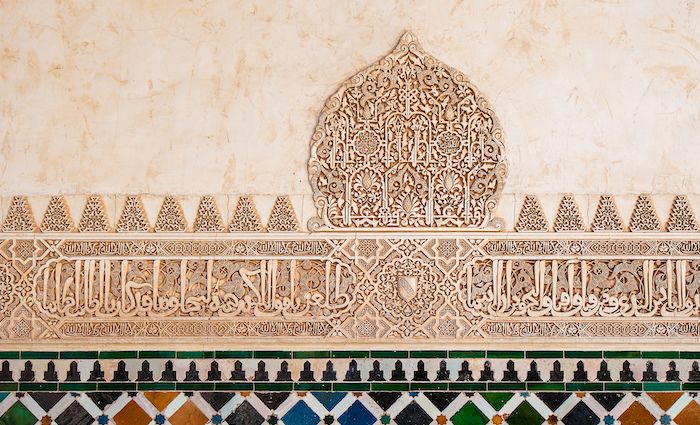

Muslim Caligraphy | Nasrid Motto
What you might think is just décor is often Arabic script. Cool, right? There are over 900 tiles in the Alhambra with a specific inscription that says “There is no conqueror but Allah” (Wa-la galiba illa Allah).
This was the personal motto of the Nasrid dynasty. Compared to other Islamic palaces, this type of decoration is unique to this site and makes it something you shouldn’t miss as you walk the halls here.
5. Alcazaba
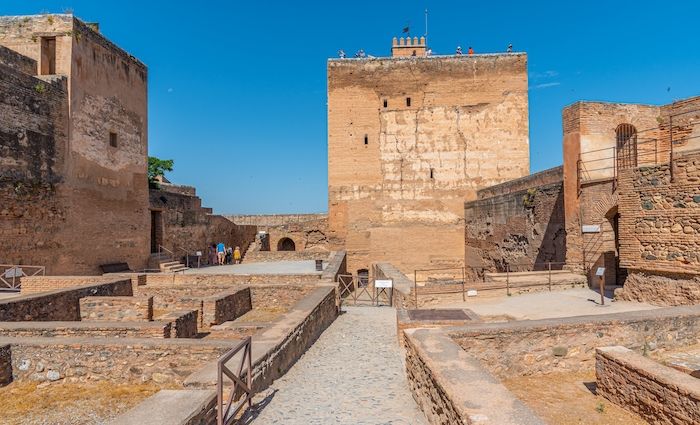

Oldest Buildings | Military Defence | Zirid Dynasty
For the oldest part of the Alhambra, head to the Alcazaba. We know, the names are a bit confusing. This is one of the oldest parts of the complex and did not belong to the Nasrid dynasty which started around 1230 AD.
According to Cabanelas Rodriguez, the Alcazaba dates to the early Middle Ages. The tower you see in the photo above is called Torre de la Vela, and it was likely the original defensive tower from the 10th or 11th century.
However, there are mentions of a castle in this area as far back as the ninth century! Ancient texts lead us to believe it was abandoned until the Zirid dynasty (10th to 12th centuries) did some reconstruction and development here. That’s probably when the Alcazaba started taking the shape you see today.
Planning your visit to the Alhambra in Granada? Check out the incredible history of the Alhambra, where to eat nearby, and where to stay in Granada.
4. Generalife
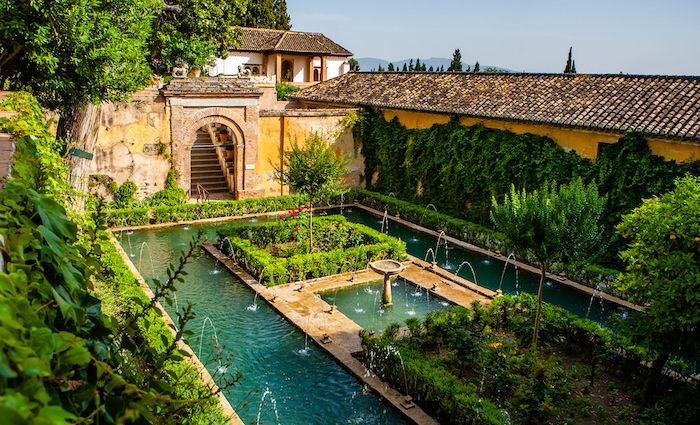

Summer Palace | Orchards | Water Stairway
This was the summer palace of the Nasrid rulers of Granada, and when you step inside yourself, you’ll see why. It’s a quiet oasis of tranquility in an otherwise hot and sometimes dusty land. And it has a cool claim to fame.
The dated of this summer palace is still vague. However, historians Aben and Wit suspect it dates from the 14th century. One of its main functionswas that of an orchard, as historian Irwin proposes, which explains the gardens in the area. In fact, these are some of the oldest Moorish gardens in the world, according to Button and Cavendish.
Be sure not to miss the Water Stairway. It’s a four-story staircase with water features going down the staircase. According to Christopher Thacker, a fire broke out in the Generalife in 1958 destroying several parts of the structure, so these have been rebuilt, but it feels just as authentic as it probably was.
3. Palace of the Lions
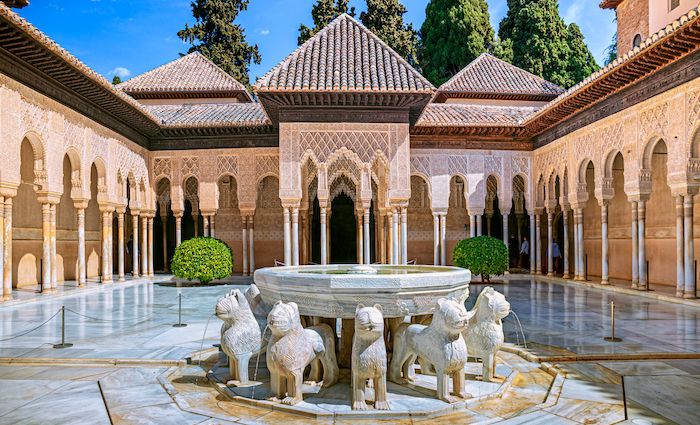

Summer Palace | Muhammad V | Court of the Lions
Can you guess what this area was for? To be fair, there are lots of educated guesses that I’ve included below. First of all, the Palace of the Lions, along with Comares, is the only original palace out of six that still stands in the Alhambra. According to Cynthia Robinson, historians thought Muhammad V built it as a victory palace—a space to show off the prowess of the ruler.
Others think it served different purposes. Ruiz and Irwin propose that it may have been intended as a madrasa space or center dedicated to learning. It would also have included a zawiya (center for devotion and veneration) and a burial site for Muhammad V. Yaqub Zaki proposes that the palace was a leisure venue for the sultan and guests, unlike Comares.
One of the key attractions of this monument is The Court of the Lions in the palace. The lion fountain and water channels are quintessential Alhambra and Al-Andalus. Furthermore, Yaqub Zaki states that the arcades show clear Persian influences beyond the Arabic style that feeds into al-Andalus.
Unfortunately, according to Fairchild Ruggles, we still don’t know exactly what the original purpose of this part of the building may have been. Some historians think it may have been a garden, while others that it was a courtyard. It’s currently difficult to restore it to its original form because French troops meddled quite a bit with the original evidence in this area.
2. Hall of the Abencerrajes
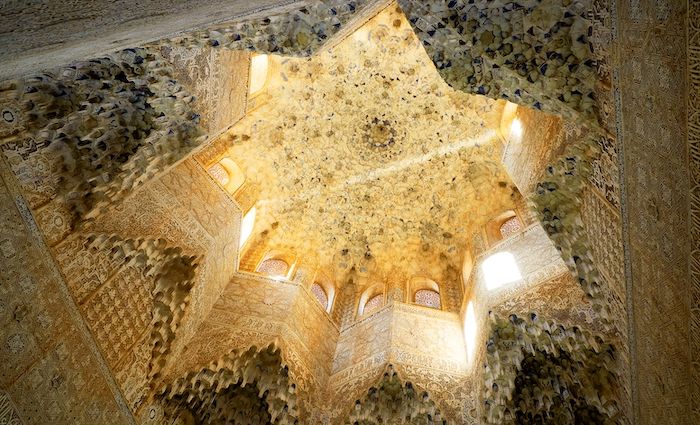

Winter Room | Muqarnas
Did you gasp when you saw that image? You will in person for sure!
According to Cynthia Robinson, the Hall of the Abencerrajes was likely conceived as a mausoleum. Again, there is little consensus here. Yaqub Zaki states this was a musical venue due to the elaborate acoustic ceilings and likely dedicated to winter use since it’s more enclosed than other areas.
The Hall of the Abencerrajes is known for its famous ceiling vaults with their honeycomb-style decoration or muqarnas. They are a beautiful sight to behold!
1. Palace of the Comares
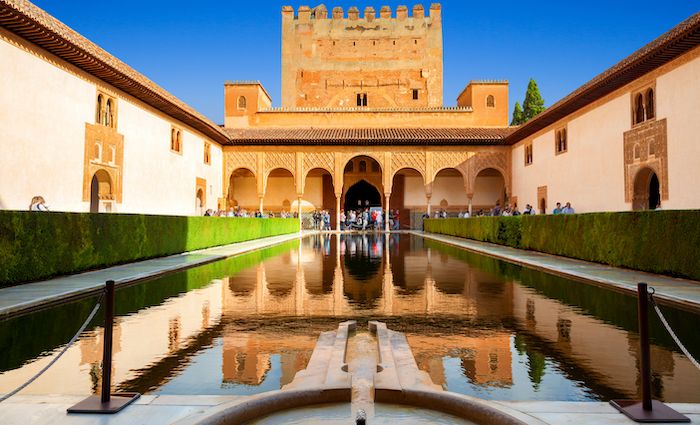

Throne Room | Cuarto Dorado | Court of Myrtles
The thing you have to see the most is known as the Palace of Comares. This is another original palace that still stands mostly complete at the Alhambra. According to Cynthia Robinson, historians agree that this was a throne room for the sultans Yusuf I and Muhammad V.
The area was extensively renovated during Muhammad V’s reign as it would also have been a space used for festivities. Ruiz proposed that this area could also be interpreted as a place that reflects the increasing patronage and support of Sufism in the Muslim court of Granada.
Don’t miss the patio now known as the Court of Myrtles due to its myrtle bushes. It also has another famous feature of the Alhambra—the large pool of reflecting water.
Back in the day, it would have helped cool the most important apartments in the palace. The sultan and his wives and concubines’ chambers would all have connected with this patio somehow, so enjoy this special place!
Not ready to book a tour? Check out how to visit the Alhambra.
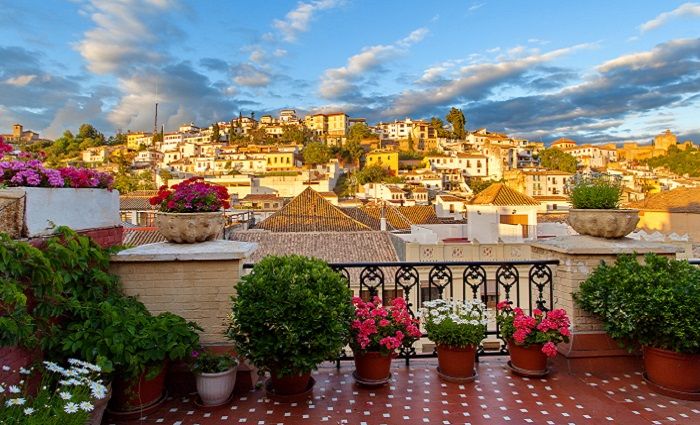

Where To Stay in Granada
Granada, Spain, is worth visiting to see the massive Alhambra. Find out where our local experts recommend staying in this ancient city. You’ll find great hotel deals that will make your stay memorable.

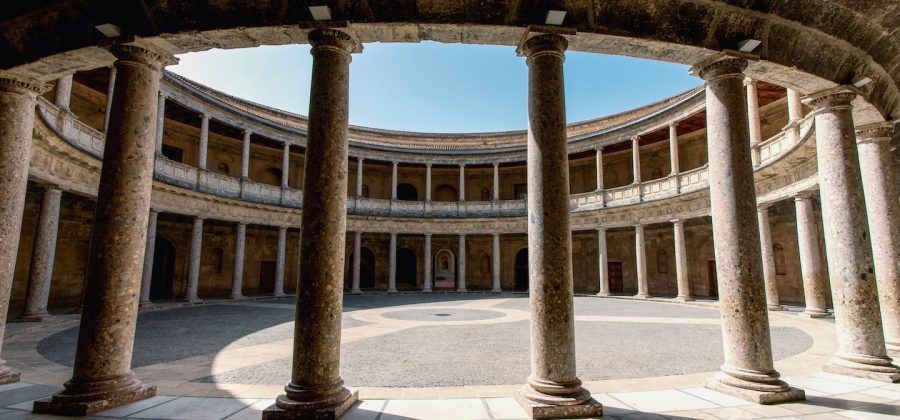
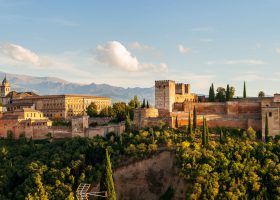
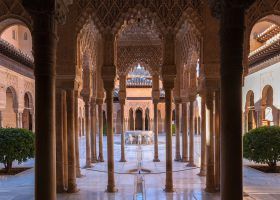
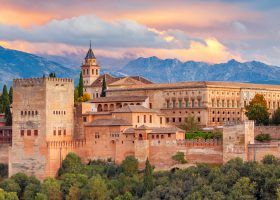
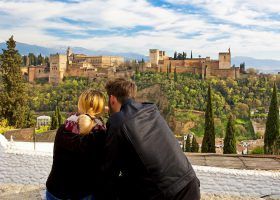

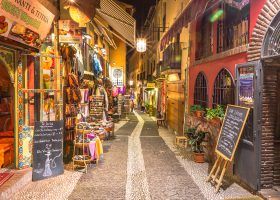


Leave a Comment